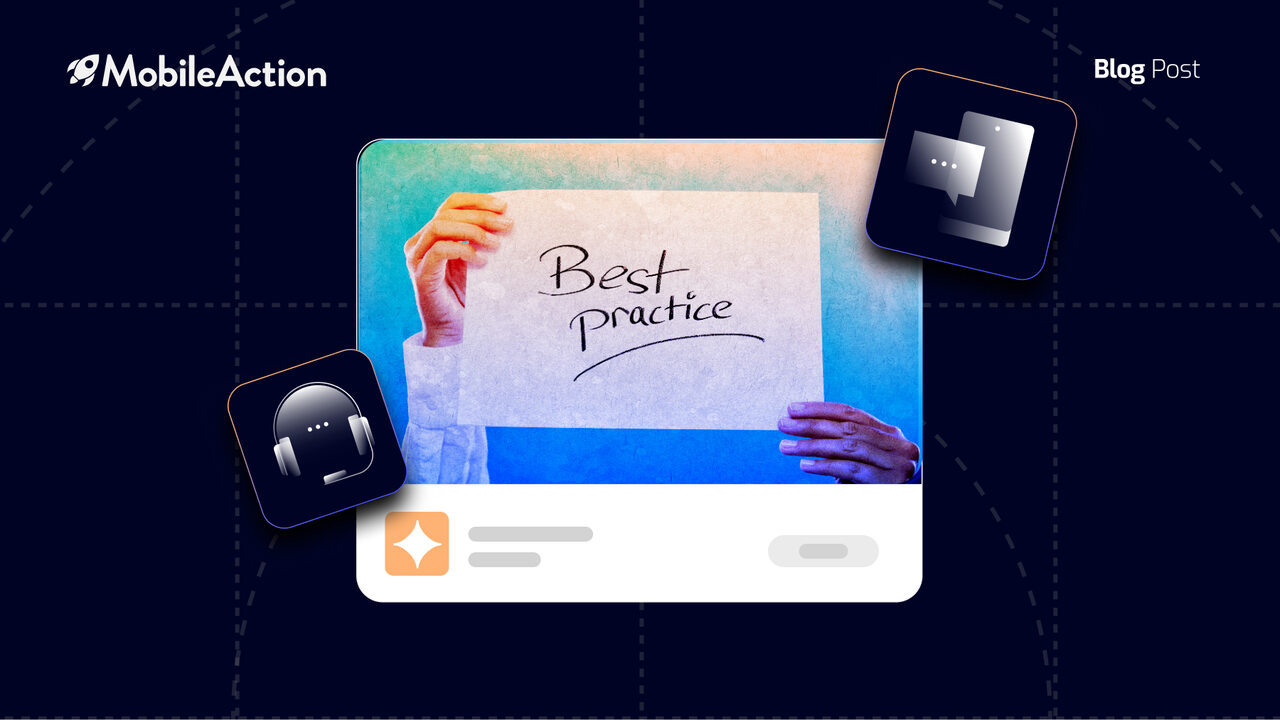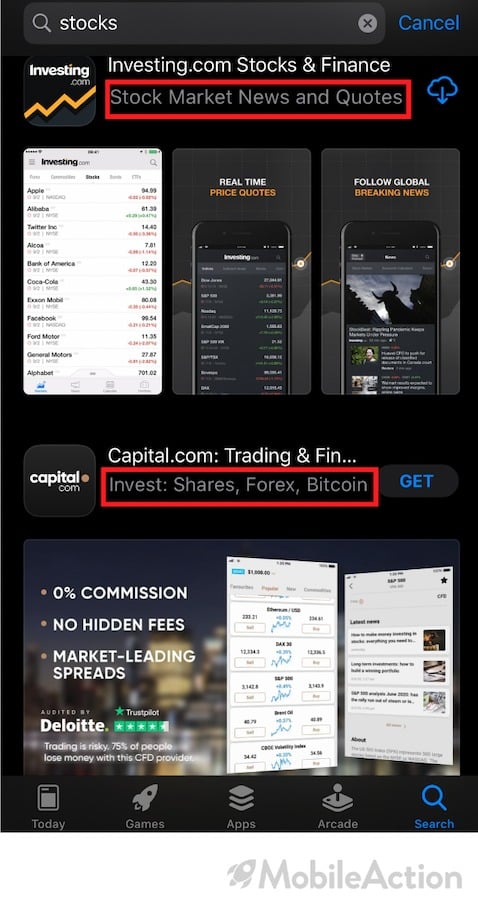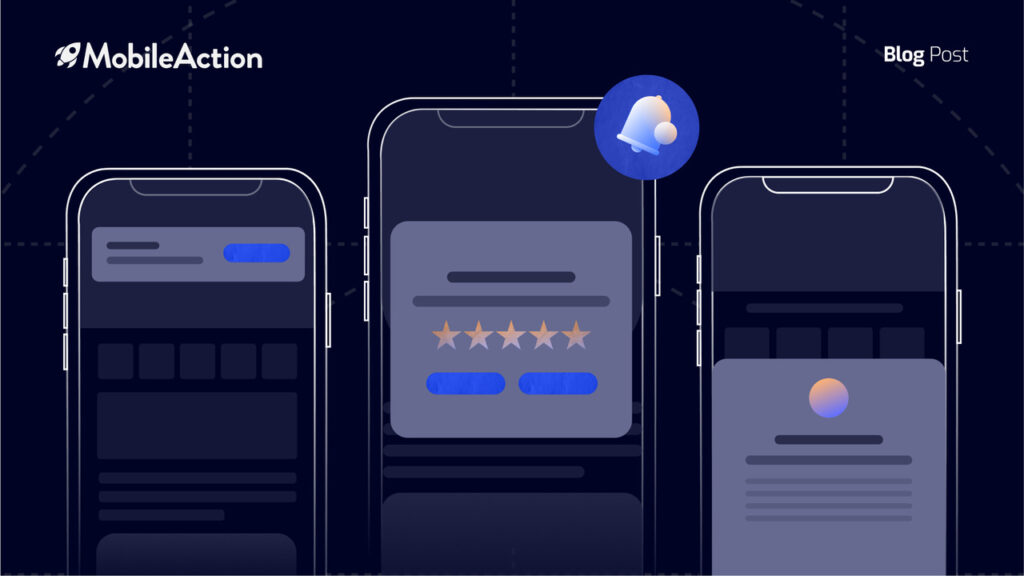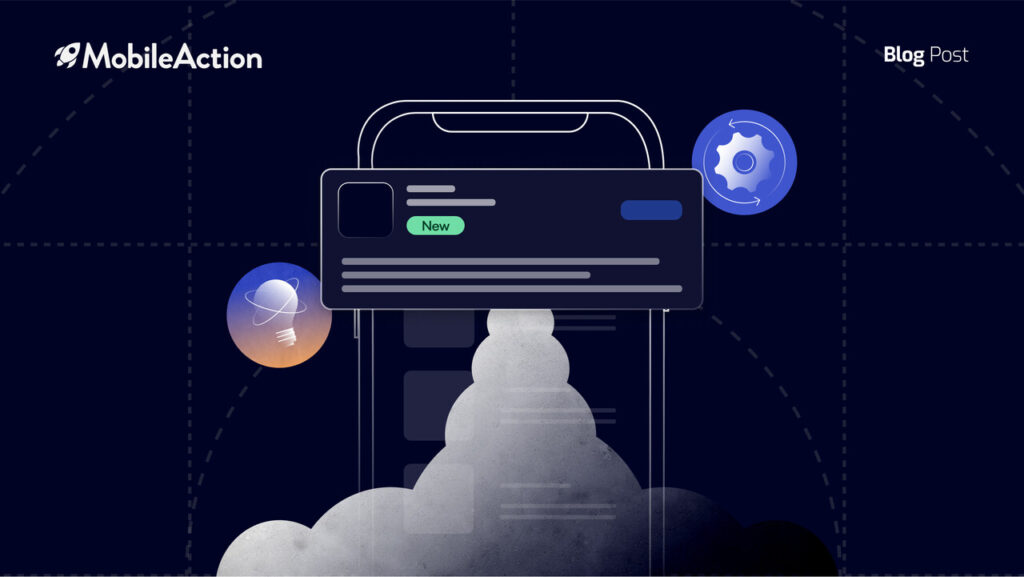2020 has been a rather interesting year for everyone. Worldwide lockdowns forced people to change their lifestyles, adapting to the “new-normal”. The app business also got affected by these changes.
As people turned to their mobile devices to have fun, work, and study, the competitiveness in the app stores increased. Apps that managed this situation with the right strategies by using the proper tools grew their business’ immensely. In this post, we will provide you with some app store optimization best practices so you can get prepared for 2021.
Whether you are just learning how to promote your app, or want to improve your marketing strategy, this post will provide you with the fundamental knowledge you need so you can grow your app.
1- Choosing the Right Keywords
Research is the key to success in the app industry. That is why the first section of our app store optimization best practices post is dedicated to research. There are millions of apps in the app stores and the competition is fierce. No matter how good your app is, without a solid app promotion strategy it will be much more difficult to reach success.
This is where app store optimization tools will come in handy. Keyword search becomes a much more efficient process once you use the proper products. MobileAction provides the industry-leading keyword tool so your app can climb to the top of the charts!
Your competitors often can provide valuable information about keywords. Thus, identifying your competitors and observing their efforts can help you to build up your own strategy. There are many ways to identify your competitors through MobileAction. Let’s assume that we are trying to conduct ASO for a mental health app. Using Keyword Explorer, we can instantly find the app’s ranking for a certain keyword in any country and time window. Additionally, keyword-level data such as search traffic or the number of apps ranking for that keyword are also displayed.
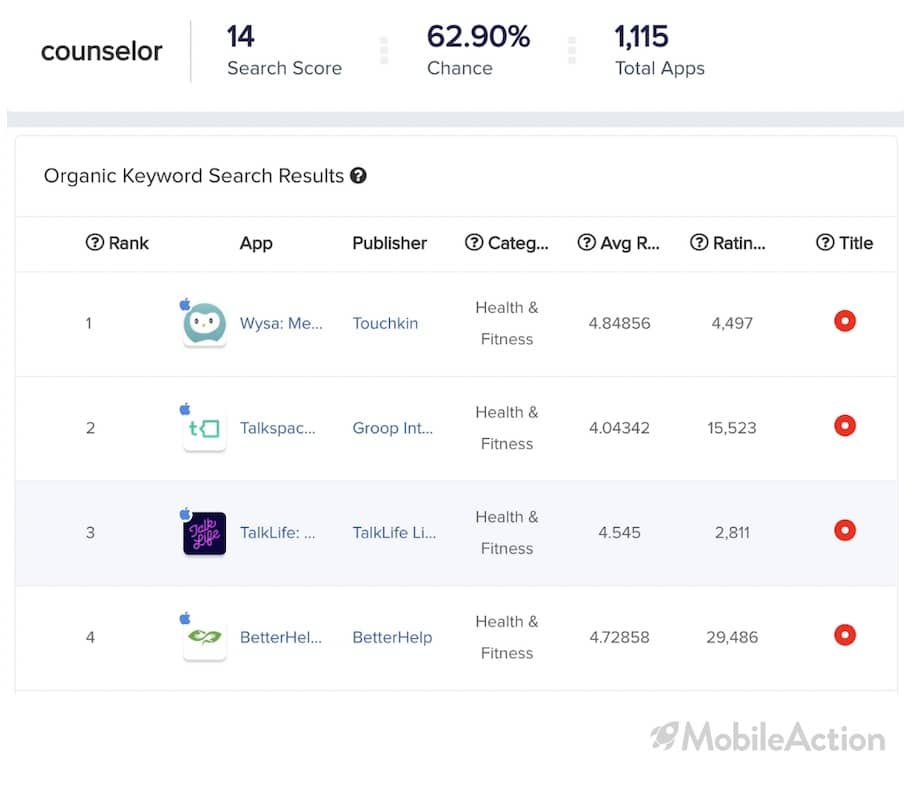
If we were trying to conduct ASO for a mental health app, “counselor” would be one of the keywords we would expect our competitors to use. Immediately, we are presented with four potential competitors. The volume for “Counselor” is 14 while 1,1115 apps are ranking for the keyword.
After identifying some competitors, you can start looking at the keywords they use in their metadata to create a pool of potential keywords. Through the Keyword Spy, we can access this information.
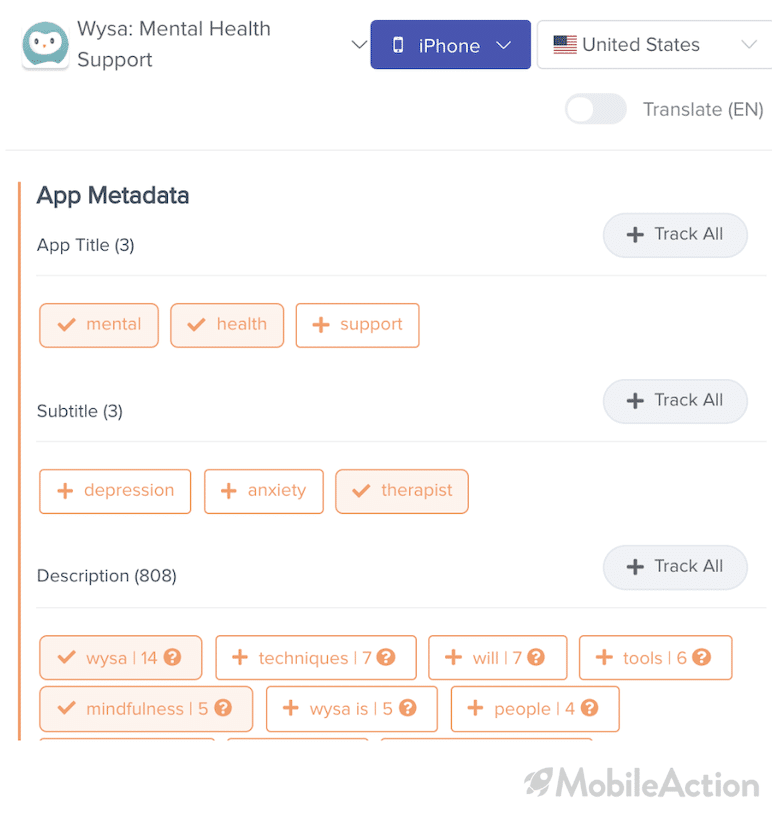
When we look at Wysa: Mental Health Support’s Keyword Spy, we are presented with the keywords they use. From here, we can choose keywords that are related to our app and add them to our tracking list. You can see that we have chosen some related words. After you repeat this process for every one of your competitors, you will have a pool of keywords that can be used to increase your visibility.
You can also use our Keyword Research tool to get suggestions about seed keywords that you determine. This way you can find out new keyword ideas. All the keywords that you add to your list will be visible in the Keyword Tracking tab. Once your list is ready, you can start implementing these keywords in your metadata according to their Search Traffic and their relevance to your app.
These are only some of the ways that you can conduct keyword optimization through MobileAction. For more detail, feel free to schedule a demo with us so we can show you the power of our keyword tools.
2- App Store vs Google Play Store
You might know which keywords you want to target, but you should also know where to use them. Developers should be aware of the differences between the Apple App Store and Google Play store.
In both of the app stores, your app title will be considered in the search algorithm. Of course, you shouldn’t just throw in keywords to your title in order to increase your visibility. But adapting your app title according to search trends might be helpful for your strategy.
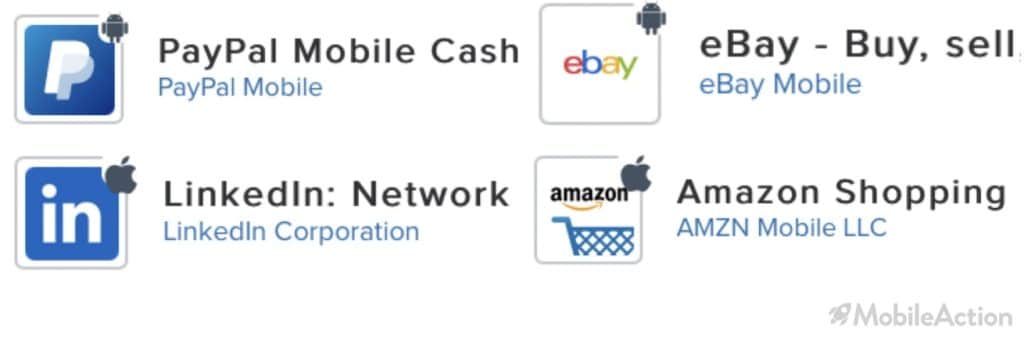
In the iOS store, your subtitle will also be indexed. This section is limited to 30 characters and appears right under the app name in the search results. Using keywords that are frequently searched for while delivering your value proposition can increase your tap-through rates.
Your app description will be indexed only in the Google Play Store. Thus, the short description (maximum 80 characters) and the long description (maximum 4000 characters) both have to be optimized for keywords.
Finally, through your App Store Connect account, you can use up to 100 characters to use related keywords. These will not be visible to the users but will be used for the search algorithm.
To learn more about the ranking factors, check out our detailed ASO Guide.
3- Conversion Optimization
If you have followed the steps in this app store optimization best practices post so far, your app will most likely increase its visibility and start getting more impressions. However, being seen in the search results alone will not be enough to grow your app. You have to convince users to click on your app and download it. This is where conversion optimization comes into play.
In order to get people to download your app, you need to clearly communicate the use and purpose of your app. Why should users choose your app over your competitors? Why do users need your app in the first place?
So how do we go about doing this? Every piece of text on your listing page needs to be carefully thought upon. Your app title, subtitle description, and even the text on your screenshots are important for capturing the attention of users. You should clarify the features of your app along with the properties that separate it from competitors.
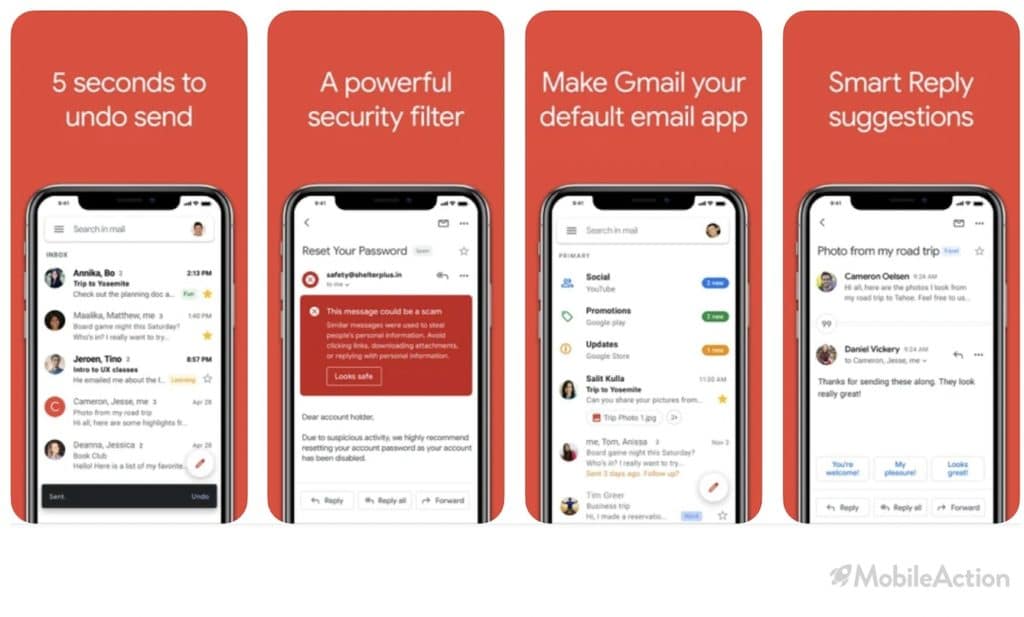
When we look at the Gmail app, our attention immediately goes to the text that emphasizes the app’s features. The messages are clean and the text is easy to read. If you’ve sent a rather rude email to your boss in a moment of heat, Gmail gives 5 seconds to you in order to prevent you from ruining your career. Kudos Gmail!
You can check out our creative assets post if you want to learn more about optimizing your app listing page. Improving the quality of your product page will help you to increase your conversions, bringing in even more users.
4- Keeping Up
After you develop your ASO strategy, your organic downloads will most probably start to increase. However, your work is not yet finished. App marketers should actively maintain their apps’ organic health and conduct optimization as needed.
As the apps stores are very dynamic, the keywords that users search for can change in the blink of an eye. By keeping up with these new trends, you will have an edge over your competitors.
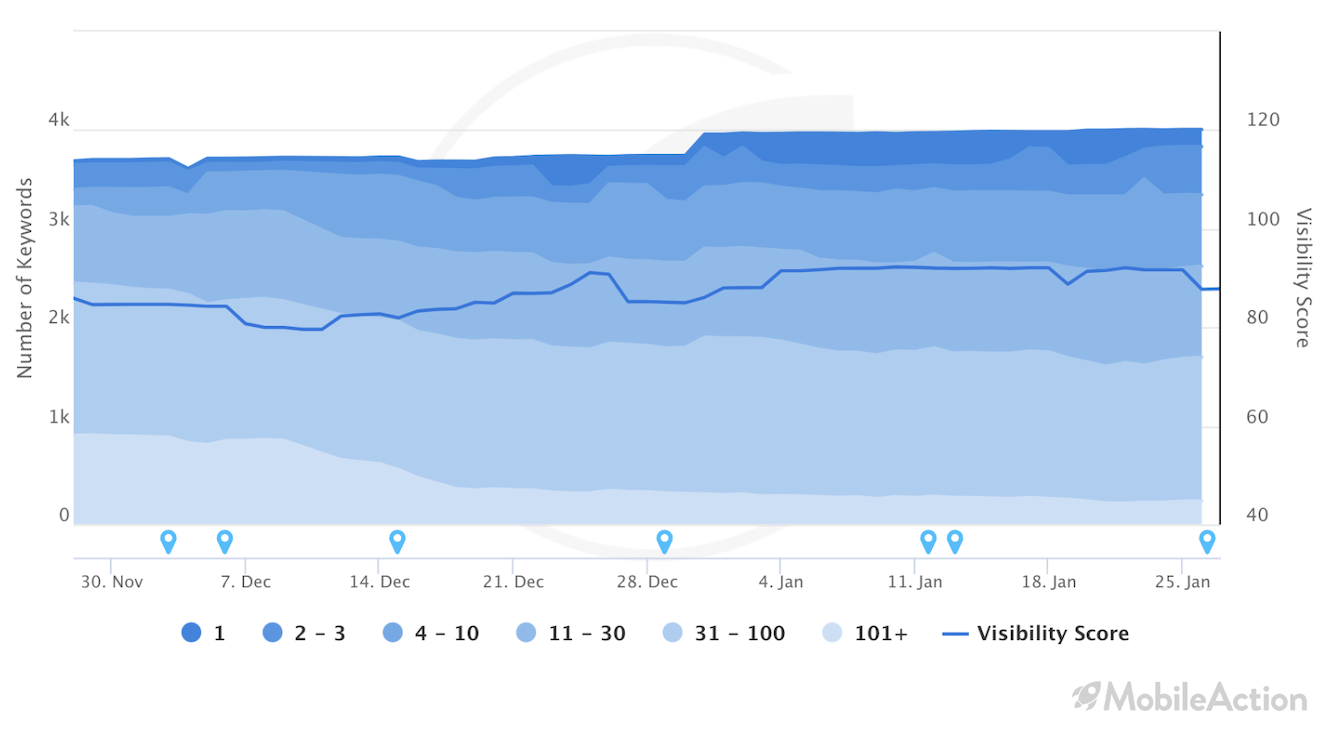
MobileAction’s ASO report is the perfect tool to track your performance. Here, we can see Project Makeover’s ASO report. In the horizontal axis, we can see the updates that the app received. As it can be clearly seen, after their update on the 28th of December, the app increased the total number of keywords they rank for. Naturally, their visibility score also increased as denoted by the blue line. This way you can observe the impact of your keyword optimization on your ASO health and take the steps necessary to improve your performance.
Start Improving your Strategy Today
This is all for our app store optimization best practices. We wish for 2021 to be a better year for everyone. There is no doubt that mobile applications will keep being an important part of our lives. As the demand for apps grows, so will the competition in the mobile industry. We hope that the app store optimization tips we provided today will help you to improve your aso marketing strategy and stay ahead of the game.
You can count on MobileAction to provide you the best tools available for keyword research and optimization. If you want to use our tools to grow your app, sign up for free today and get to work!
